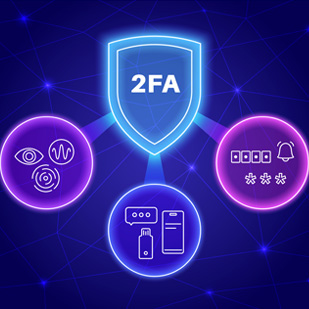Two-factor authentication (2FA) is a simple yet effective security measure. It works by using two different methods to confirm a user’s identity. Instead of just asking for a username and password, 2FA adds a second layer of security, making it harder for cybercriminals to breach a user’s account.
The second authentication factor commonly employs knowledge, possession, or biometrics to verify a user’s identity.
2FA based on a knowledge factor is a concept we encounter in our daily lives. For instance, when an ATM prompts you for your PIN and debit card, it’s a form of 2FA. In this case, the unique debit card and the security code act as the two factors ensuring the security of your account.
By now, most consumers will be familiar with using possession as a second factor. This often takes the form of a text message or code generated by an authenticator app. Both require the presence of an authorized device like a smartphone or tablet. Even if a hacker gains access to a user’s password (an increasingly common occurrence), hackers are locked out because they don’t have access to the code that appears on the user’s device.
Biometric-based 2FA may be the most secure of the three secondary factors. A hacker can gain access to a password or a mobile device, but it’s much harder to fake a fingerprint.
Common biometric factors include retina, fingerprint and facial topography. To verify a user’s identity, a device scans these unique aspects and compares them to encrypted data stored locally on the device. Most modern smartphones now use facial recognition, which is more secure than the popular fingerprint ID method that preceded it.
Even bodily fluids like blood or saliva can be used to verify identity. However, these more complex and secure verification methods are usually reserved for high-security applications because of the time and expense required to implement them.
Read more about Security,





















